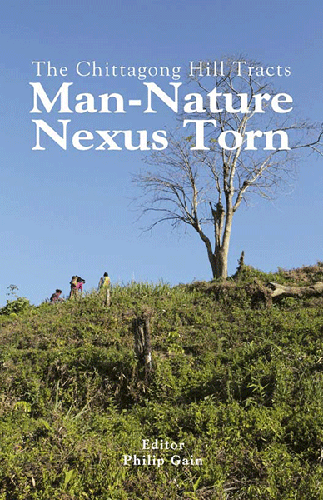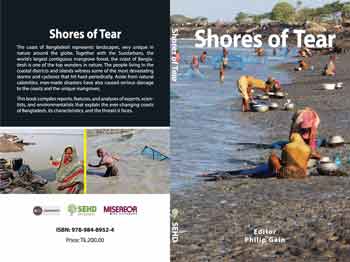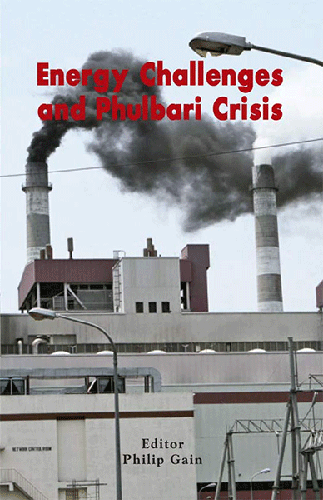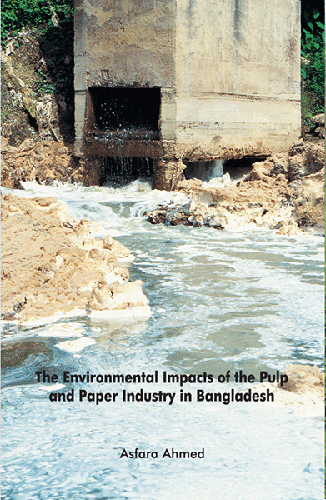
The Chittagong Hill Tracts: Man-Nature Nexus Torn
“The Chittagong Hill Tracts: Man-Nature Nexus Torn” is a report on the state of environment in the CHT. Once part of a mega-diversity zone in South Asia, the CHT has lost its majestic look. It is now faced with an ecological disaster. The hills are barren today and the forest resources have decreased to great extent.
The indigenous peoples who had a free run in the forests for generations now witness their nexus with nature torn. This is an unprecedented ecocide for the Chittagong Hill Tracts. This 368-page book compiles facts, analyses, thoughts, critiques, maps, and images about how the natural heritage and the ecology of the CHThasbeen torn to pieces. The destruction of forests and the landscapes, invasion of outsiders, and promotion of plantation economy, to name a few factors, have torn the man-nature nexus in the CHT.
Edited by Philip Gain | English PBK 368 pages, 2013 | Price: Tk. 500 US$20
“The most romantic corner of the country” the CHT, very different from the Ganges-Brahmaputra Meghna (GBM) floodplains and delta, “is beset with environmental and social problems,” observes Prof. Haroun Er Rashid, the geography guru and a contributor to the report. He stresses on the fragility of the region and warns, “If resources of the CHT continue to be used unwisely, as at present, the environment will degrade severely in the next ten years. To prevent that bleak future every resource—trees, rocks, water, soil etc.—will have to be used in a sustainable manner.” Other contributors reinforce Prof. Rashid’s contention.
Different chapters of the report deal with geography and environment, forests, official and illegal logging, plantation [economy], environmental impacts of development projects [Karnaphuli Paper Mill and Kaptai Hydroelectricity in particular] land grabbing, serfdom in the colonial reserves, pillage of the reserved forests (special attention to Reingkhyong, Kassalong, Sangu, and Matamuhuri reserved forests), village common forestry (VCF), bamboo [with an attention to its flowering and rat flood], traditional use of medicinal plants, wildlife [animals and birds] and their threats, brick-burning, invasion of tobacco, timber and furniture trade, water, stone mining, houses, traditional foods of the indigenous peoples, and impacts of militarization.
An annotated bibliography of books, reports and documentary films on the CHT and the glossary, concepts, and theories relating to the CHT bring useful practical tips for further research and investigation on the CHT environment. We believe this report will guide people to understand the ecological disaster that has happened in the CHT. At the same time, it comes as an eye-opener to the state and the majority who can still play the role in saving the last bits and pieces of nature and repairing the nexus of nature and human beings.
Contributors to the Book: Prof. Haroun Er Rashid, Jenneke Arens, Raja Devasish Roy, Raja Tridiv Roy (late), Philip Gain, Sudibbya Kanti Khisha, Sardar Nasiruddin, M. Monirul H. Khan, Ronald R. Halder, Sayam U. Chowdhuruy, Buddhajyoti Chakma, Partha Shankar Saha, Prof. Sadeka Halim, Asfara Ahmed, Han Han, A.K.M. Muajjam Hossain Russel, Tahmid Huq Easher, Shekhar Kanti Ray, Md. Safiullah Safi, Syeda Nusrat Haque, Supriyo Chakma, Alimul Haque, Robert Alec Lindeman, Asif Khan, Tania Sultana, Ushing Prue, Nimaprue Marma, Ching Mo Sang, Lucky Chakma, and Ainud Sony.
Edited by Philip Gain
English PBK 368 pages, 2013
Price: Tk. 500 US$20



